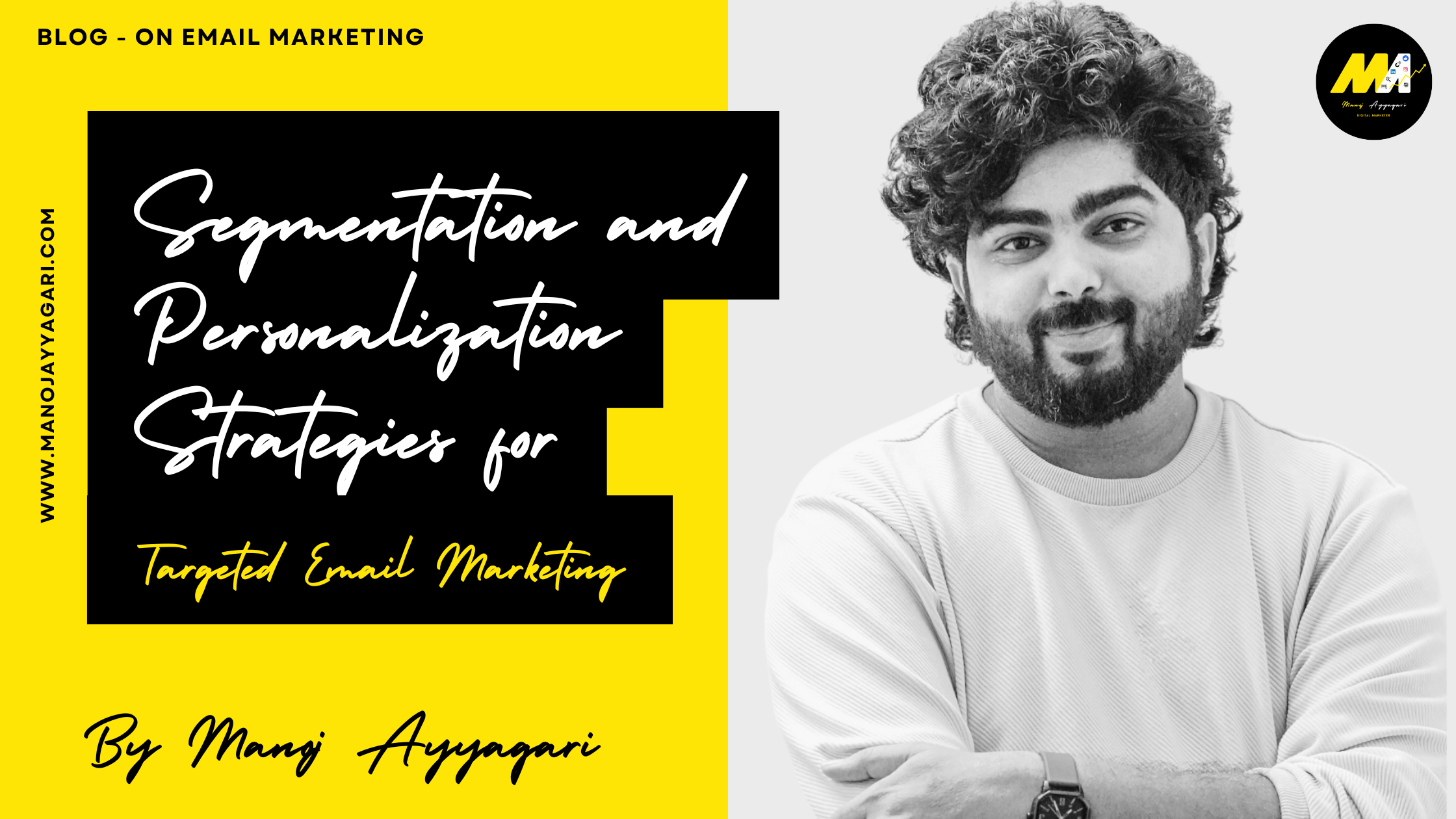
In the realm of digital marketing, email remains one of the most powerful tools for engaging with your audience. However, simply sending generic emails to your entire subscriber list often results in low engagement and conversions. To improve your email marketing strategy, it’s essential to adopt segmentation and personalization tactics that allow you to tailor your messaging to specific audience segments. In this blog, I will delve into effective strategies for implementing segmentation and personalization in your email campaigns.
Understanding Segmentation
Segmentation is the practice of dividing your email list into smaller, targeted groups based on specific criteria. This allows you to send more relevant content to each group, which can lead to higher engagement rates. Here are some key methods for effective segmentation:
- Demographic Segmentation: Group your subscribers based on demographic information such as age, gender, location, and occupation. This helps you tailor your messaging to resonate with each demographic’s specific needs and interests.
- Behavioral Segmentation: Analyze how subscribers interact with your emails and website. Segment based on actions like email opens, clicks, and purchase history to identify patterns and preferences. This allows you to send targeted messages that align with their behavior.
- Psychographic Segmentation: Understand the attitudes, values, and lifestyles of your subscribers. By creating content that speaks to their interests and beliefs, you can foster deeper connections and engagement.
- Purchase History: Segment based on past purchases to target repeat customers with relevant upsell or cross-sell offers. For instance, if a customer purchased a particular product, send them related product recommendations or special offers.
By employing these segmentation strategies, you can ensure that your emails are relevant and engaging, leading to improved open and click-through rates.
The Importance of Personalization
Personalization takes segmentation a step further by tailoring your email content to the individual recipient. This goes beyond simply inserting a name into the email greeting; it involves delivering content that resonates with the specific needs and preferences of each subscriber. Here are some effective personalization strategies:
- Dynamic Content: Use dynamic content blocks in your emails to display different information to different segments. For example, you can show personalized product recommendations based on a subscriber’s previous interactions or purchases.
- Tailored Messaging: Craft subject lines and email body content that reflect the interests and preferences of each segment. Personalizing the message makes the reader feel valued and understood.
- Behavior-Based Triggers: Implement automated emails triggered by specific actions, such as abandoned carts or browsing history. These timely messages can help convert potential customers into paying ones.
- Milestone Celebrations: Acknowledge special moments, such as anniversaries or birthdays, with personalized emails that offer exclusive discounts or gifts. This gesture can enhance customer loyalty and encourage repeat purchases.
By implementing these personalization techniques, you can create a more meaningful connection with your audience, fostering brand loyalty and encouraging higher engagement rates.
Best Practices for Segmentation and Personalization
To effectively implement segmentation and personalization in your email marketing strategy, consider these best practices:
- Collect Data Strategically: Utilize sign-up forms, surveys, and interactions to gather valuable data about your subscribers. The more information you have, the better you can segment and personalize your campaigns.
- Test and Optimize: Continuously test your segmentation and personalization efforts through A/B testing. This allows you to identify what resonates best with each segment and refine your strategies accordingly.
- Monitor Engagement Metrics: Track key metrics such as open rates, click-through rates, and conversion rates for each segmented campaign. Analyzing this data helps you understand what’s working and what needs improvement.
- Maintain a Clean List: Regularly clean your email list by removing inactive subscribers. A clean list ensures that your segments remain relevant and engaged.
- Respect Frequency: While personalization can increase engagement, be mindful of sending too many emails. Find the right balance to keep your audience interested without overwhelming them.
Conclusion
In conclusion, leveraging segmentation and personalization strategies is essential for effective email marketing. By understanding your audience and tailoring your messages accordingly, you can enhance engagement, drive conversions, and build lasting relationships with your customers.
Have you implemented segmentation and personalization in your email marketing efforts? Share your experiences and thoughts in the comments below—I’d love to hear how these strategies have worked for you!
Check out our Latest Blog on How to Set Up Your First Facebook Ad Campaign in 5 Simple Steps
Follow me on LinkedIn for more




